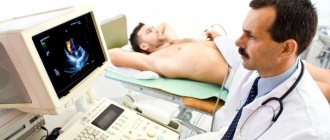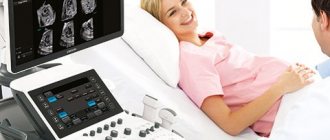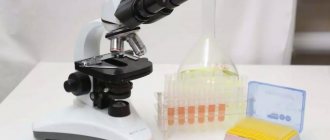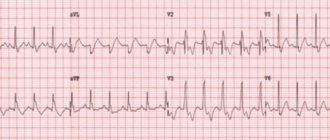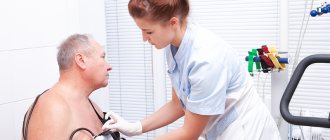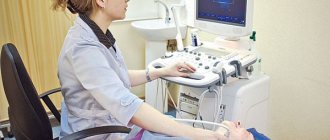During the diagnostic process you may notice:
- changes in the size and shape of the heart;
- inflammatory processes in the layer of the pericardial membrane (which is characterized by the presence of fluid around the heart, accumulated between the layers of the pericardium);
- protrusion of the heart wall (typical of damage after a heart attack);
- changes in the shape of the heart, stretching of the chambers (typical of cardiomyopathy);
- valve defects (they look like damage to the myocardial anatomy that is uncharacteristic of a healthy heart);
- the presence of thrombotic plaques, compactions, calcium deposits on the vascular walls (coronary artery calcification).
The examination is carried out in two types - without contrast (standard) and with contrast, which helps to highlight and better see the boundaries of the left atrium.
What is cardiac radiography?
X-ray of the heart is a fairly old research method and is to a certain extent inferior to some modern diagnostic procedures. However, to this day, radiography is quite informative. It allows you to quickly and accurately find out the condition of the heart chambers and great vessels. You can also obtain data on the contractility of the organ. Heart disease can be detected without radiography; it is often prescribed as an adjunct. X-rays of the heart are possible in both public and private clinics. This diagnostic method is very common.
Coronary angiography as a method for diagnosing heart diseases
Makarevich Olga Vadimovna
Doctor anesthesiologist resuscitator OAiR No. 2
Fig.1 Coronary angiography - x-ray examination of the condition of the arteries of the heart
- What is coronary angiography or cardiac catheterization?
- In what situations is coronary angiography necessary?
- How dangerous is coronary angiography?
- How should a patient prepare for coronary angiography?
- What happens during coronary angiography and how is coronary angiography performed?
What is coronary angiography?
Coronary angiography (also called cardiac catheterization or coronary angiography) is an invasive diagnostic procedure that can detect damage to the vessels (arteries) of the heart and see how well the patient's heart is functioning. The essence and principle of coronary angiography is that a special diagnostic catheter is placed at the origin of the coronary arteries (vessels supplying the heart), through the lumen of which a contrast agent is injected, staining the arteries of the heart. An X-ray tube is used to record images of the coronary arteries, and the internal lumen of the vessel is recorded. A diagnostic catheter is a long, thin plastic elastic tube, thanks to which contrast is supplied to the arteries of the heart through a puncture of a peripheral artery (femoral or axillary). It is also possible to “paint” the cavities of the heart when a catheter is inserted into their lumen.
In what situations is coronary angiography necessary?
Coronary angiography is an invasive procedure, since during its implementation there is minimal, but still traumatization of body tissues (at the stage of access to the vessel for insertion of catheters). Taking this into account, the use of angiographic examination for diagnostic purposes should be carried out according to strict indications, when other additional less traumatic research methods have not made it possible to establish an accurate diagnosis. Coronary angiography is also necessary when planning surgical treatment of a particular cardiovascular pathology. Below are the main indications for using this diagnostic method:
- The need for accurate confirmation of heart and vascular disease (for example, coronary heart disease, heart valve pathology or aortic pathology).
- Assess cardiac and myocardial function.
- Determine the indications and type of proposed surgical treatment (for example, it will be endovascular intervention or bypass surgery).
One of the undeniable advantages of coronary angiography, as well as any angiographic diagnostic study, is the ability to move from a diagnostic procedure to a therapeutic one and perform various endovascular treatment procedures, such as balloon angioplasty and stenting of the coronary arteries.
Fig.2 Stenting of coronary arteries with balloon angioplasty
How dangerous is coronary angiography?
In general, problems when performing coronary angiography are very rare, no more than 1 case per 100,000 examinations. However, given that angiographic examination itself is traumatic, the risks of certain complications are always present. There are always measures to prevent such complications and it is always necessary to discuss this with the doctor who will perform coronary angiography. The following are the most common complications of angiographic studies:
- Bleeding from the area of arterial puncture
- Heart rhythm disturbance
- Formation of blood clots and hematomas
- Infection and inflammation of the wound in the puncture area
- Allergic reaction to contrast agent
- Stroke
- Myocardial infarction
- Perforation of a blood vessel (forming a hole in the vessel) or its rupture
- Decompression sickness (air entering the lumen of a blood vessel, which can be an extremely life-threatening complication)
- Death
How should a patient prepare for coronary angiography?
Before performing coronary angiography, the patient is recommended to complete a standard list of necessary examinations. These include a chest x-ray, blood tests for infections, biochemical and complete blood tests, coagulation tests, platelet aggregation tests, echocardiography, electrocardiogram and urinalysis.
No special preparations are required to perform coronary angiography. The patient may be asked to leave jewelry or jewelry at home. It is recommended to stop taking blood thinning medications, such as warfarin or aspirin, 10 days before the test. The cardiologist will definitely discuss with the patient the need to take certain medications that the patient was taking before hospitalization for the study.
If the patient is diabetic, then he needs to continue taking antidiabetic medications or consult an endocrinologist the day before. The patient must inform the doctor about the presence of allergic reactions to a particular medication, for example, a reaction to iodine and iodine-containing drugs, X-ray contrast agents, alcohol, novocaine, other medications, products containing rubber (rubber gloves), antibiotics, etc. It is necessary to take personal hygiene items with you (toothbrush, slippers, towel, etc.), since your stay in the clinic can last 2-3 days and their presence will make your stay in the hospital more comfortable. On the evening before the study and in the morning, the patient will have their intestines prepared using an enema; they are also advised not to eat or drink in the morning. In the morning, the area where the artery will be punctured for access will be shaved, usually the groin or axilla.
If patients have serious pathologies of other organs and systems of the body, further examination is necessary to determine the extent of their disorders. For example, in the presence of kidney pathology, it is important to assess the filtration function of the renal tissue, since the urinary system is the only place for removal of the contrast agent from the body. If high risks of developing renal dysfunction are identified after coronary angiography, the question of refusing the study or the need for renal replacement therapy (hemodialysis) is usually raised. However, modern contrast agents that are used in coronary angiography have less and less damaging effects and more often coronary angiography, like any other contrast study, proceeds without complications.
The main reason why a doctor may refuse to conduct a coronary angiography study on a patient is the instability of the patient’s condition, shock, or exacerbation of a chronic disease, including infectious etiology.
What happens during coronary angiography and how is coronary angiography performed?
Before the coronary angiography, the patient will be asked to wear special underwear. The nurse will place a peripheral venous catheter in the cubital vein, which is needed to administer fluids and medications during the procedure.
The room in which the angiographic examination is performed is called the cath lab and will be somewhat cool and shaded when coronary angiography is performed. This is necessary for the convenience of the doctor’s work and good visibility of the resulting image on the monitors. The patient will also see the image obtained during the diagnosis. The subject will be placed on a special movable table, around which the X-ray tube will move in different planes.
The operating nurse will cover the area of the artery puncture with sterile linen, which is done to prevent the spread and addition of infection, that is, for the purpose of asepsis. Electrodes of an electrocardiograph, a device with which the activity of the heart will be monitored, will be placed on the chest area. The basic principle of the coronary angiography procedure is presented in the following animation: Coronary angiography in 3D reconstruction.
To monitor the state of kidney function and the rate of urine separation, a catheter will be installed in the bladder. For the purpose of relaxation, the patient is administered sedatives on the eve of coronary angiography. To numb the area through which the catheter will be installed and manipulations will be performed, the x-ray angiosurgeon will administer novocaine.
After anesthetizing the intended artery puncture site, a small skin incision is made necessary to install a special vascular port (intraducer) into the lumen of the artery. Through it, various catheters and devices are inserted. After properly administered anesthesia, pain and discomfort in the puncture hole area rarely occur. Most often, the femoral artery is used as access to the arteries, but it is possible to pass a catheter through the arteries of the arm.
After inserting and positioning the diagnostic catheter in the place required for contrasting, the lights are dimmed and after tests for the reaction to the contrast agent (small doses of contrast are administered), contrasting of the coronary arteries is performed. It is also possible to assess the condition of the valves and chambers (atria and ventricles) of the heart.
When contrast is administered, you may feel a feeling of heat in your chest. This is an absolutely normal reaction of the body to the introduction of almost any drug into the vascular bed and it goes away within a few seconds. If you experience unusual sensations, such as itching of the skin, a feeling of choking or difficulty breathing, swelling in the throat or difficulty swallowing, hoarseness in the throat, chest discomfort and other symptoms of a possible allergic reaction, be sure to notify the doctor who is performing the coronary angiography.
After placing the X-ray tube in the desired position, the x-ray surgeon may ask the patient not to breathe, hold his breath and not cough, after which he will take a series of images. Holding your breath is necessary to obtain a high-quality image. Then, after receiving all the necessary information about the condition of the coronary arteries and the function of the heart, the catheters are removed, and a pressure bandage is applied to the puncture site or special occluders (mechanical systems for closing the arteries) are used.
Upon completion of the angiographic examination, if there were no complications of the procedure, the patient is usually transferred to the department from which he was transferred for coronary angiography. If, however, certain complications of the intervention do arise, then these complications are corrected and the patient is placed in the intensive care ward or in the intensive care unit under the supervision of a resuscitator. The patient is transferred to a specialized department after stabilization of his condition. During the day, until the next morning, the patient must remain with his leg straightened (the one through which the puncture was performed) and in a lying position. It is advisable not to lift your head from the pillow, since this movement causes an increase in pressure in the groin and abdomen, and this can provoke the development of bleeding from the area of access to the artery. If the puncture was performed through the artery of the arm, the restriction of movement concerns only the shoulder girdle. Sitting or standing up immediately after the examination is strictly prohibited. If you experience a feeling of numbness or tingling in your legs or arms, or if the bandage gets wet with blood, you must inform the doctor who is monitoring the patient after the study. There may be a desire to urinate after angiography. A ship is usually used for these purposes. Gradual activation of the patient is carried out the next day. First, they usually ask you to sit for a while, after which you are allowed to stand up. This is due to the fact that when one remains in a horizontal position for 24 hours and then abruptly moves to a vertical position, collapse may develop. Immediately after the study, it is recommended to take a significant amount of fluid. It is usually drunk or administered intravenously through a previously installed catheter in the cubital vein. This is necessary for the rapid removal of the contrast agent, which has a number of toxic properties, from the body. Further treatment and review of the test results are usually carried out by the attending physician. Tactics and possible treatment options, if necessary, are usually discussed with him.
X-ray anatomy
If you need to take a picture, it is worth learning the x-ray anatomy of large vessels and the heart. The X-ray anatomy of this organ consists of its shadow, the pulmonary artery, the aorta, and the vena cava. 2/3 of the listed structures are located to the left of the midline of the chest, only 1/3 protrudes to the right side. Chest X-ray anatomy includes the lungs, bronchi and trachea.
There are several types of location of the heart shadow, depending on its angle and the patient’s constitution. Namely:
- vertical – the angle is more than 45 degrees;
- oblique – the angle is 45 degrees;
- horizontal – angle less than 45 degrees.
As X-rays of the heart show, the horizontal position is usually characteristic of women, and the vertical position is usually characteristic of tall people.
What can an x-ray reveal?
An X-ray of the heart will provide a large amount of information regarding the position, size and condition of the organ and its structures. Based on these data, the doctor will be able to draw a conclusion about the presence of pathologies and identify the cause of the patient’s deterioration in well-being.
Heart sizes
An X-ray of the heart must be taken to find out whether the size of the organ is normal. They are very important in determining pathologies. The size is determined not by the width and length that are visible on an x-ray, but by the cardiothoracic index. To do this, you need to measure the width of the chest at the level of the fourth rib, and also find out the width of the heart in the same area. If the cell is twice as wide as the organ, the index will be 50%. If it is higher, then the heart muscle is enlarged. Myocardial hypertrophy may indicate ischemia or hypertension. Dilation of the chambers may be associated with cardiomyopathy or heart failure.
Condition of the great vessels
When thinking about what an X-ray of the heart shows, it is worth knowing that the condition of the great vessels will become known. The doctor will be able to find out if there are plaques, calcium deposits, or any lumps in the aorta. It will also be possible to identify a disease that is characterized by the accumulation of fluid in the pericardial sac. It is otherwise called “pericarditis”. If the fluid accumulates slowly, the organ becomes like a bag, but if it accumulates quickly, it becomes like a ball. If the condition is aggravated by calcium salt deposits, the doctor will diagnose constrictive pericarditis.
What is coronary angiography?
Coronary angiography is a modern invasive method of checking the vessels that carry oxygen to the heart muscle. This method is radiological. Thanks to it, after introducing a contrast agent into the vessels, various pathologies of the heart and blood vessels feeding the organ can be detected.
Coronary angiography is a method widely used in therapy, cardiology and cardiac surgery in modern times. Thanks to this method, doctors are able to not only detect defects in the functioning of the organ in a timely manner, but also eliminate them in a timely manner by performing an operation in real time. By injecting a contrast agent into the vessels, doctors can fully assess the patient's blood flow and accurately localize blockage or reduction in the lumen of the coronary artery.
Coronary angiography is a modern method that provides specialists with a large amount of information about the patient’s health. This is an invasive method, so it is carried out in a special operating room prepared for the procedure and having all the necessary equipment.
Indications for use
Everyone knows that diagnostic measures, like treatment, should be prescribed only to people who need it. Therefore, for their implementation there is a list of indications and contraindications, which allows us to determine the main group of patients allowed for the study.
Today, the main indications for coronary vascular examination are:
- Acute pathologies of the heart muscle;
- Suspicion of blockage and damage to the coronary veins and arteries;
- Stenosis of arteries by plaques;
- Myocardial infarction in the acute stage, as well as suspicion of its presence;
- Coronary heart disease in the chronic stage and suspected disease;
- Angina pectoris of all types and stages;
- The appearance of atypical pain behind the sternum;
- Congestive heart failure;
- Presence and suspicion of infectious and inflammatory processes in the heart - endocarditis, myocarditis;
- Recent chest injuries.
In addition, coronary angiography is also performed on completely healthy people to diagnose the condition of the heart and blood vessels. This procedure is used for early diagnosis of diseases in persons exposed to dangerous and harmful production, heavy physical labor, and also living in unfavorable environmental conditions.
Indications for diagnosing the heart and blood vessels using this method include preventive examinations immediately before surgery of any complexity, to determine the possibility of surgery at a given time.
Features of the procedure in children
Sometimes heart x-rays may be performed in children. This type of study is very rarely prescribed to children, since the procedure is contraindicated under 15 years of age. However, it may be required to identify heart defects, as well as when planning surgical interventions or to evaluate the effectiveness of the chosen treatment method. X-rays may also be needed to identify tumor processes.
If we are talking about a very young child, an X-ray of the heart will be taken using a special device. It is a stand on which the child is placed and his torso, head and limbs are secured with belts. This will ensure that the patient remains completely still while the doctor takes the image. The procedure will take no more than a couple of seconds, and discomfort is possible only from the belts with which the fixation is carried out. If we are talking about older children, they can undergo the procedure even without adults.
Indications for cardiac x-ray
A heart x-ray is performed for the following indications:
- planned treatment of patients suffering from coronary heart disease;
- suspicion of existing heart defects;
- asymptomatic, unstable angina;
- tracking conditions in the pulmonary circulation;
- asymptomatic hidden diseases of the cardiovascular system;
- to identify calcifications of the aortic valves, mitral valves, pericardial sac, myocardium after acute cardiac ischemia.
Cardiologists and surgeons refer their patients who complain of:
- having symptoms of angina pectoris - this is compressive pain in the chest, a feeling of lack of air, interruptions in heart function, rhythm disturbances;
- shortness of breath at rest and during physical activity, increased fatigue and severe weakness;
- tachycardia, arrhythmia - disturbances in the rhythm of heart contractions;
- swelling of the lower extremities and pronounced pallor of the skin;
- enlarged liver;
- persistent cough and fever.
X-ray of the heart makes it possible to suspect the following pathologies in a patient:
- exudative pericarditis - infectious inflammatory lesions of the pericardium (pericardium);
- abnormal increases in heart size called myocardial hypertrophy, which is found in coronary heart disease and hypertension;
- aneurysms of the walls after myocardial infarction, manifest themselves in the form of protrusions;
- dilated cardiomyopathy - damage to the heart muscles in the form of stretching of the heart chambers;
- a pronounced anatomical defect in the membranes of the heart muscle, most often these are various valve defects;
- calcium deposits on the walls of the coronary artery, the presence of seals, detection of atherosclerotic and thrombotic plaques;
- cloudiness, expansion of the root of the lungs, which means the possible presence of cardiac pathology.
Preparation and carrying out diagnostics
You will only need to prepare if you need to undergo a cardiac X-ray with contrast. It involves taking tests to determine if you have an allergy to contrast, as well as visiting the office on an empty stomach, which will help avoid nausea.
To begin the procedure, you need to remove all jewelry or metal accessories that may affect the quality of the photo. The procedure is performed in 4 different projections:
- front;
- lateral left;
- oblique left (at an angle of 45 degrees);
- right.
Thanks to this, the description and conclusion of the heart x-ray will be as accurate as possible. The doctor will examine all planes of the organ and note the presence of pathological processes.
Disadvantages and advantages of the method
Advantages of the method:
- widespread availability of X-ray rooms, accessibility of the method for patients;
- low cost of the procedure;
- high detail of images thanks to high-resolution film, which allows you to identify and assess the condition of surrounding tissues, neighboring organs and blood vessels;
- ease of comparison of two images taken at different times in order to assess the dynamics of the development of pathology or taken routinely during preventive examinations.
The disadvantages of the method include:
- insufficient information content;
- difficulties in diagnosing organs that are in constant motion, which includes the heart due to its regular contractions (the image is blurred);
- impossibility of frequent implementation due to radiation exposure;
- the need to develop and process the film, which takes a lot of time.
An annual examination, as a rule, reveals pathologies before the first symptoms appear and the patient independently seeks medical attention, becoming the basis for prescribing more detailed studies and subsequent diagnosis.
Contraindications
Such a study cannot be called completely safe. In this regard, there are a number of situations in which such diagnostics are not performed, but a more gentle method is selected. Often, an ultrasound
or MRI, as well as other studies.
Pregnant women
Before finding out what a heart x-ray is and what this procedure shows, a woman should be absolutely sure that there is no pregnancy. This situation is an absolute contraindication to the procedure, since there is a risk that X-ray radiation will have an adverse effect on the body of both the expectant mother and the baby. It is also not recommended for breastfeeding mothers to undergo diagnostics. However, in some situations, a doctor may prescribe such a procedure if its benefits are significantly higher than the likely risks. Therefore, it is best to trust the doctor.
Decoding the results
The initial description of the image (protocol) is performed by the radiologist after receiving the result (film or image on the screen). The doctor (surgeon, cardiologist, therapist) additionally examines the image and protocol, makes a transcript and gives a conclusion. The specialist evaluates the shape of the heart, the presence of seals, the shape of the edge of the shadow and other parameters. The procedure can only be performed by a doctor with extensive experience in interpreting images due to the difficulty of determining deviations from shadows superimposed on each other.
